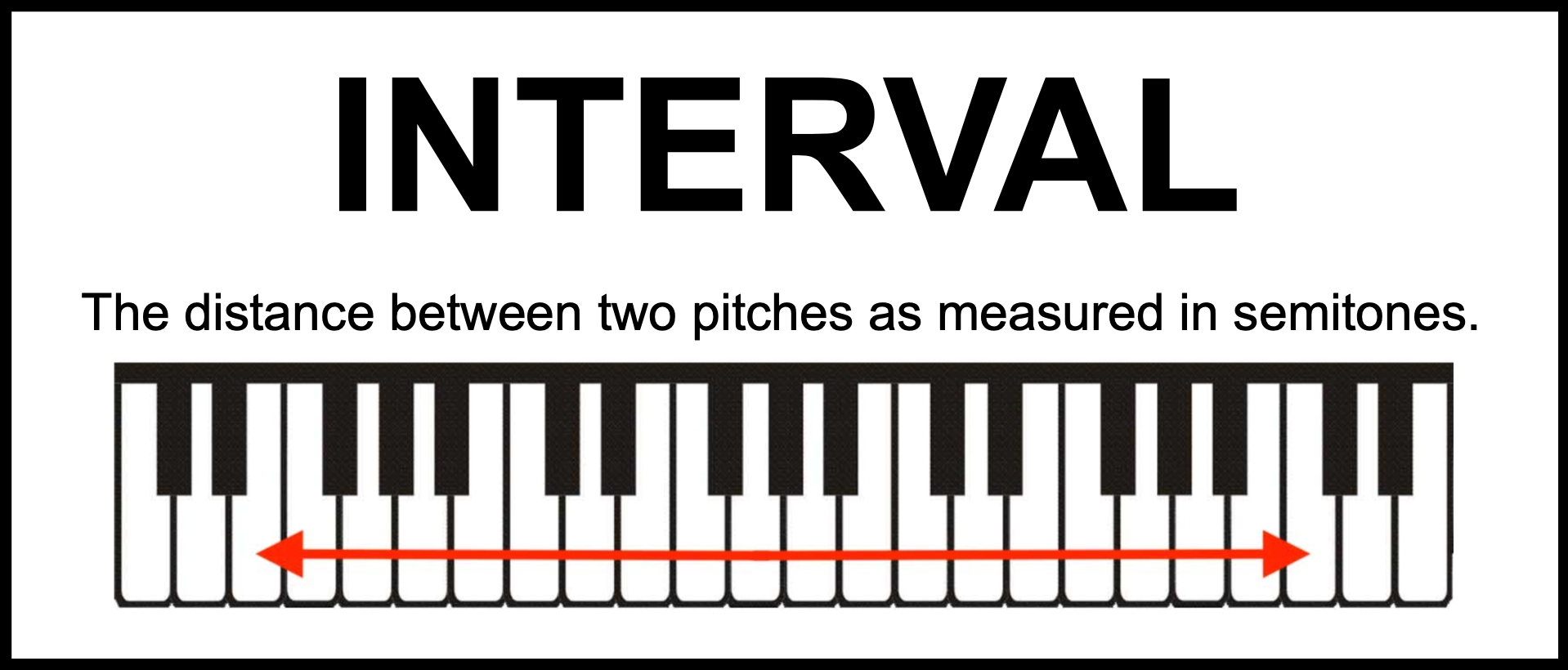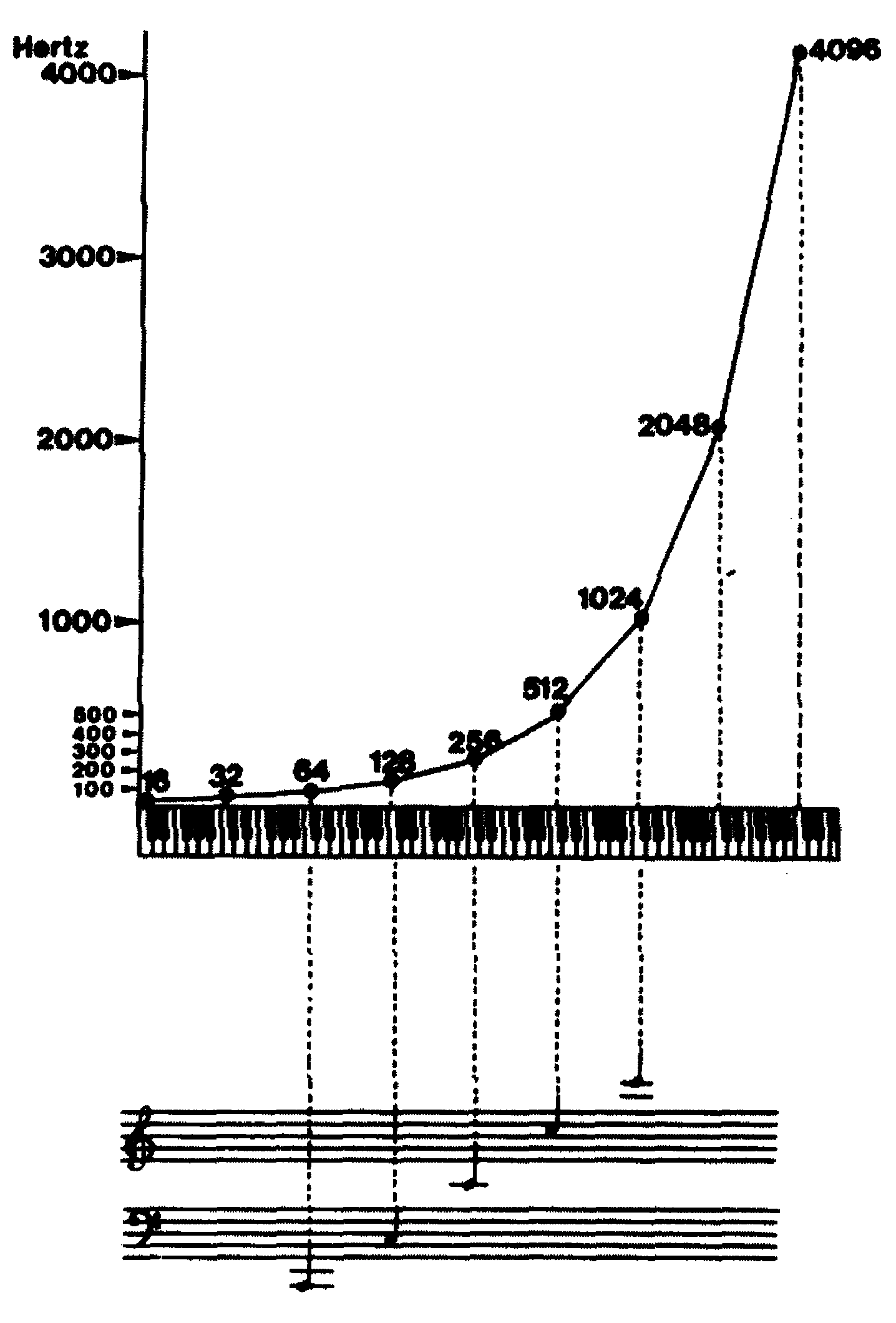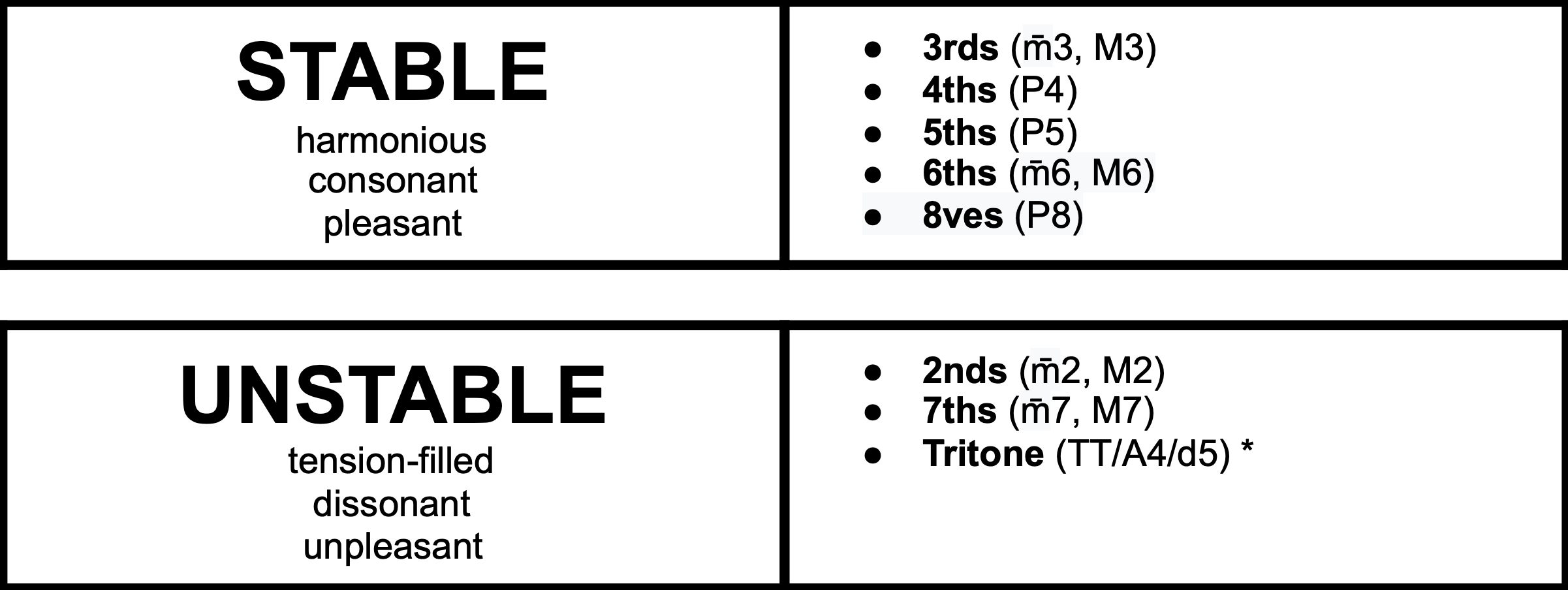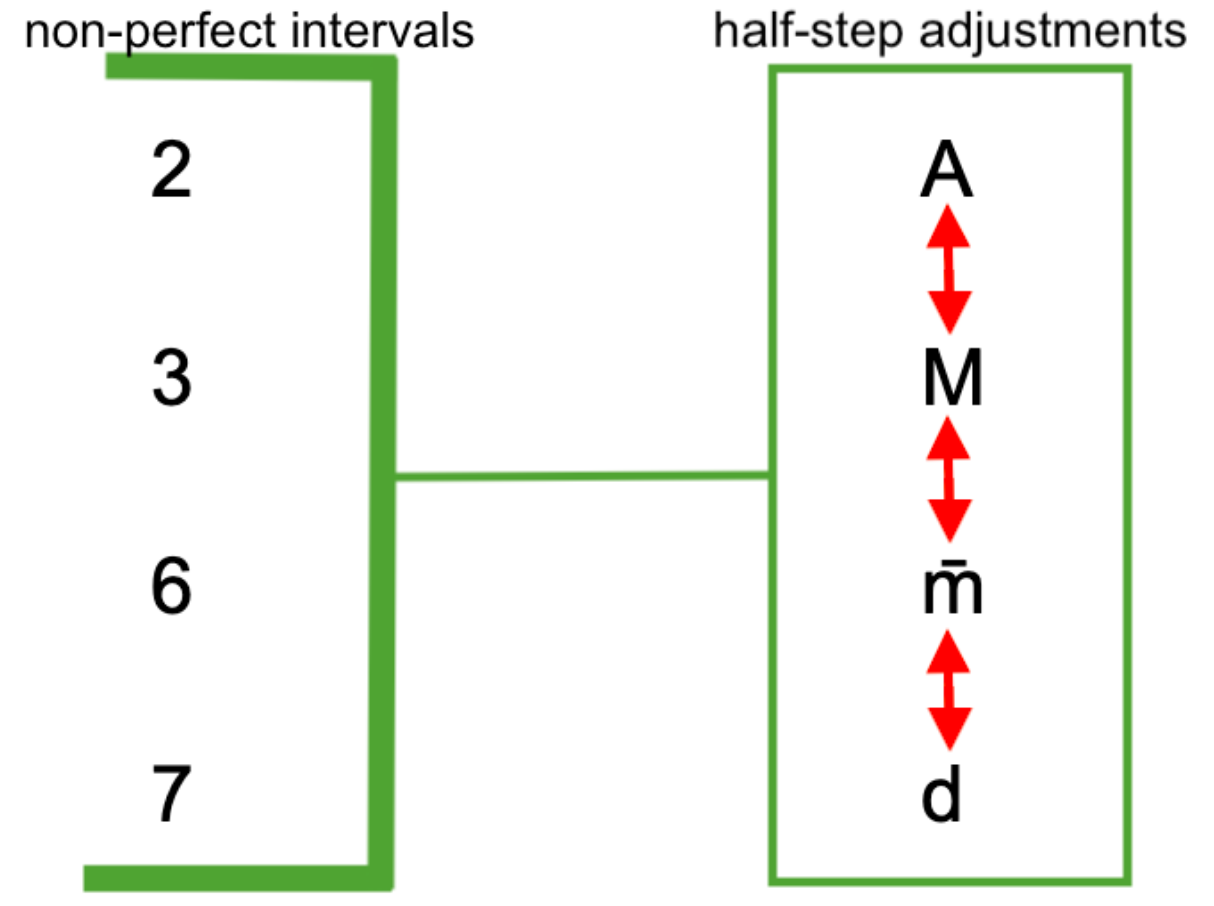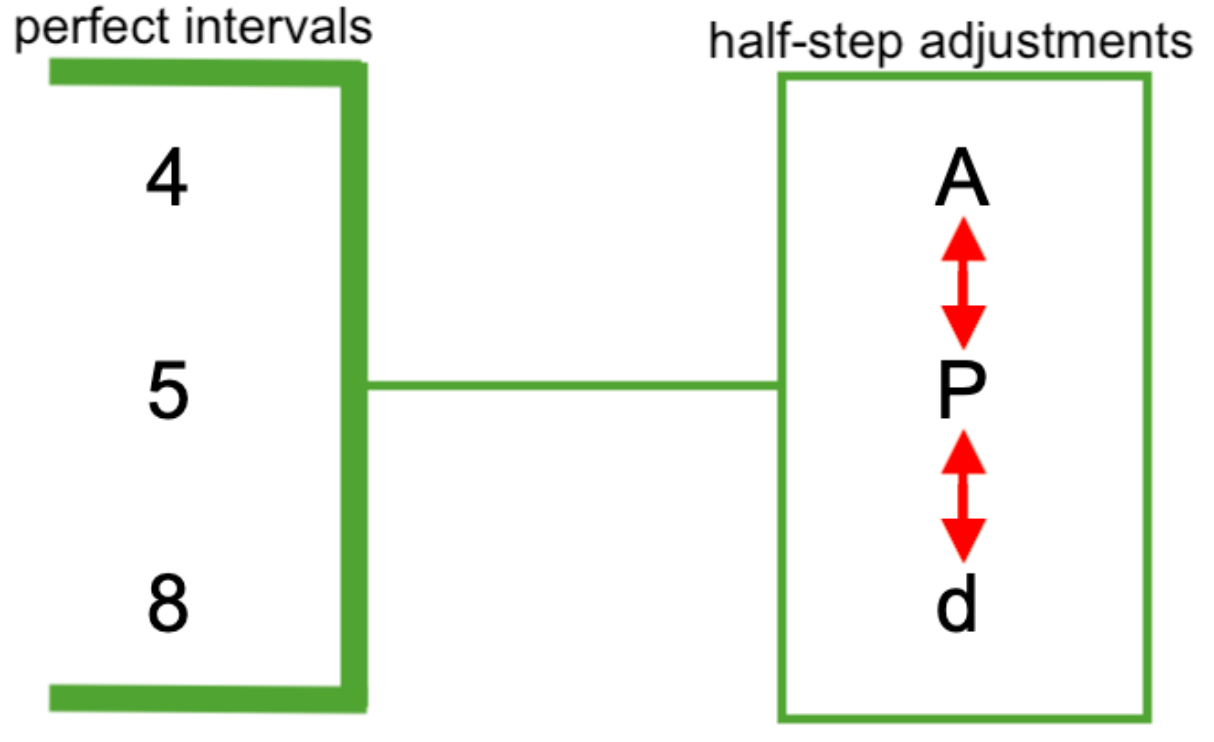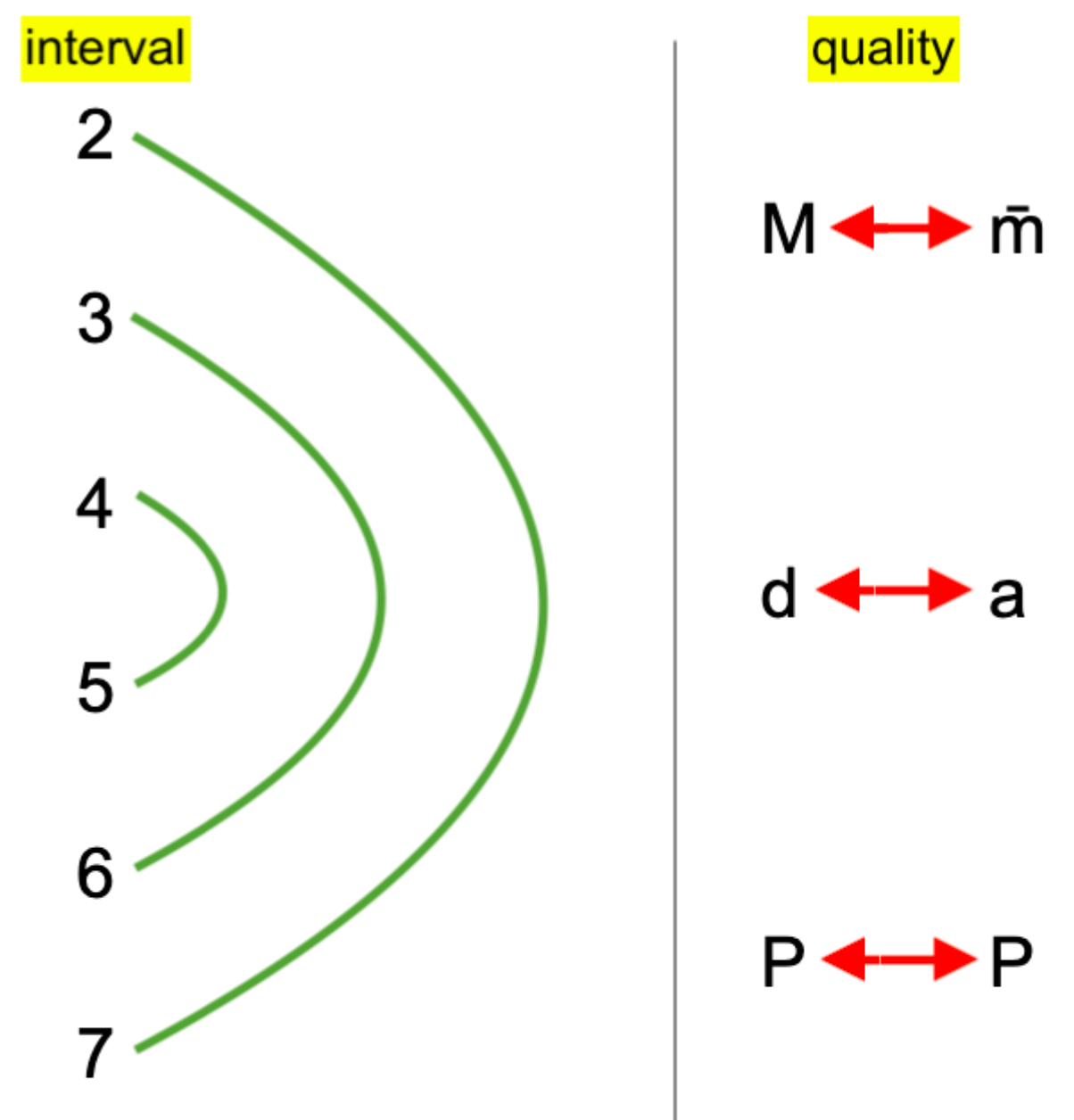8. Stable vs Unstable Intervals
The distance between two pitches is known as an interval.
In the functional harmony influenced by Western European evolution of music the interval of an octave equates to two pitches whose distance from each other coincides with the doubling of the frequency of the lower pitch.
When the interval of an octave is sliced up into 12 parts, all equidistant from each other, the chromatic scale that contains all of the pitches used in modern functional harmony is formed.
Since there are 12 unique pitches, this means that we can create 12 different intervals (including the interval that moves from the original note to the octave, but excluding duplicated enharmonic intervals).
It can be overwhelming to listen to the wide variety of sounds that these intervals can make in combination with each other. One of the first steps to take to successfully recognize and identify intervals is to separate them into two categories: Stable vs Unstable. Different terms can be used in addition to “stable” and “unstable”:
Intervals created by the chromatic scale can be categorized into one of the above “sounds”:
* note: the interval that is between a P4 and a P5, known as a tritone, is very definitely a tension filled interval that is categorized as an unstable sound.
Each of these intervals can be subdivided even further into its quality (sometimes referred to as its sonority). There are five qualities that a triad or an interval can have: Perfect, Major, minor, diminished, and Augmented.
2nds, 3rds, 6ths and 7ths branch out into either minor quality intervals or Major quality intervals. Minor intervals can give us a sense of melancholy or sadness, while major intervals can give us a sense of triumph or happiness.
4ths, 5ths and 8ves are known as “perfect” intervals, although perhaps a more appropriate term for them would be “constant” intervals. These intervals cannot be branched out into a major or a minor quality.
In fact, perfect intervals don’t have a quality that will place them as either “happy” or “sad”. When these intervals are inverted they retain their hollow sounding quality, meaning that they don’t have the capacity to branch off into a major or a minor quality. The resulting qualities of intervals after they have been inverted can explain why some intervals are called major and minor, and why some are termed perfect.
Inverting a P5 results in a P4. The “perfect” quality of those two intervals have what can be described as a “hollow” sound: they don’t inspire a type of emotion that is either happy or sad.
On the other hand, an inverted m̄2 will result in a M7, and an inverted M2 will result in a m̄7. When inverted, the quality of these intervals is flipped from M to m̄, and from m̄ to M. This will occur with any interval that has the capacity for Major and minor sonorities, like 2nds, 3rds, 6ths and 7ths.
It is important to note that in written notation, enharmonic spellings of intervals can include qualities that are diminished and Augmented. However, when simply listening to the pitches without reference to written notation, a d7 sounds exactly the same as a M6. It would be impossible to identify “aurally” whether an interval is a d7 or a M6 because they are the exact same sounding interval.
The tritone, although technically considered an interval of a 4th or a 5th, depending on how it is notated, does not have a consonant sound like its P4 and P5 cousins. A tritone is notated as either an A4 or a d5 based on how far apart the written pitches are in the notation. However, when hearing the interval of a tritone aurally without reference to its written notation, it is impossible to identify the interval as either an A4 or a d5 because they sound exactly the same, in which case the label of “ TT '' is given. With the written notation available, though, the presence of either four pitches or five pitches away from the original note will determine whether the interval will be labeled as A4 or d5.
A tritone is an unstable sound. In fact, it is one of the most unstable intervals present in the 12-tone chromatic system. The tension of the tritone is particularly effective in creating tension and release when it is part of a dominant seventh chord (V7). A tritone is created between the “Ti” and “Fa” solfege syllables that are part of the “Sol - Ti - Re - Fa”. These two pitches, in turn, resolve inwards into the tonic triad (Ti / Do, and Fa \ Mi).
Check out the examples listed below that feature each interval from the 12-tone chromatic system.
from the film Jaws (1975)
featured interval: minor second (m̄2)
from the film Cinderella (1950)
featured interval: Major second (M2)
“Right Hand Man” from the musical Hamilton
featured interval: minor third (m̄3)
“Ain’t Got No, I Got Life”, Nina Simone rendition
featured interval: Major third (M3)
“How Far I’ll Go” from the film Moana (2016)
featured interval: Perfect fourth (P4)
“Maria” from the musical film West Side Story (1961)
featured interval: Tritone (TT, A4, d5)
“L’estasi dell’oro” from the film The Good, The Bad and The Ugly (1966)
featured interval: Perfect fifth (P5)
“The Entertainer”, Scott Joplin
featured interval: minor 6th (m̄6)
“Nobody Knows The Trouble I’ve Seen”, Louis Armstrong rendition
featured interval: Major sixth (M6)
from the TV series Star Trek: The Original Series (1966 - 1969)
featured interval: minor seventh (m̄7)
from the film Superman (1978)
featured interval: Major seventh (M7)
“Etude No. 9”, Philip Glass (performed by Sally Whitwell)
featured interval: Perfect octave (P8)
When listening for intervals, it is important to first ask the question, “Is the interval creating tension or is the interval instilling a sense of stability?” The identification of intervals is an essential tool (used in conjunction with knowledge of how harmony works) to understand the sounds that we are hearing around us, and to be able to translate them into musical notation.
